The four battleships of the König class were an evolution of the previous Kaiser, as their main innovation laid in the purely axial arrangement of their five turrets, of which with one was amidship and the others superimposed, as done in Great Britain and France. But still, it was weak, with 12-in guns (30,5 cm) whereas all contemporaries were moving at least to 34 cm guns, or for the British 381 mm (14 and 15 in) with projects in the US and Japan for 16 in guns.
That was substantial as a 12-in shell weighted 2.5 times less than a 16-in shell, traduced in a weaker salvo overall, and at a shorter range. In practice it was not such as hassle as the Germans showed at Jutland. They were more accurate, distances due to the bad weather were way shorter, they fired a bit faster and far less shells proved duds. Plus, this did not made much differences as they mostly fired on battlecruisers at Jutland, when forming the Ist Battle Squadron, the best capital ship unit Germany had to offer at that time. They engaged HMS Lion, Princess Royal, and Tiger, at about 21,000 yards and later against the Queen Elizabeth-class battleships of 5th Battle Squadron they had surprising good results, even managing to badly damage HMS Warspite, showing amazing resilience at the same time. This example showed perfectly why “paper battles” end very differently in real combat, when ships are thrown in situation they were never designed or planned for. The König proved their worth, despite their supposed inferiority on paper which was cancelled in real combat.

Development
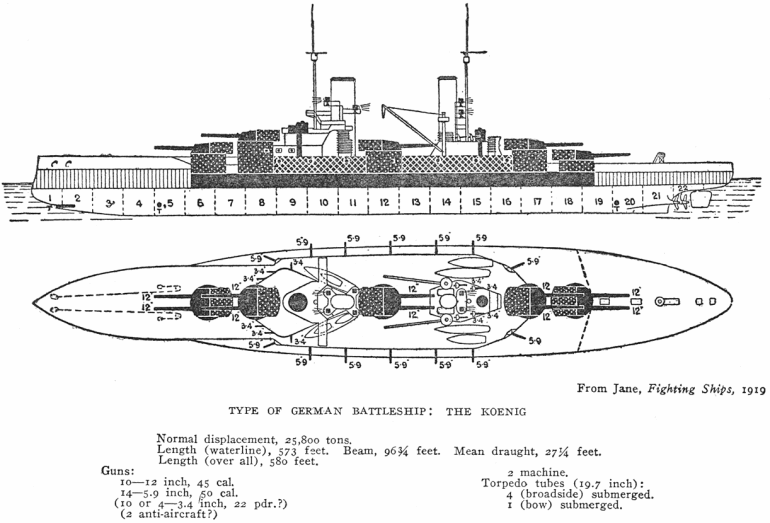
Jane’s fighting ships 1919 drawing of the König class (project Gutemberg)
To explain party this state of affairs, let’s have a look on naval procurement in the German Empire: Funds that had been appropriated for the Navy in the First Amendment passed in 1906, were going to be used up, before they were scheduled to be replenished in 1911, explaining the gap in construction. In the First Amendment (naval law 1906) Admiral Alfred von Tirpitz requested, but failed, to secure funding for new battleships. They were approved two years later by the Reichstag, in 1908. This amendment also increased the naval budget by 1 billion marks. Tirpitz planned four new capital ships per year, two battleships and two battlecruisers, but increased cost forced a reduction to just two, FY1912 and up to FY1917. The 1908 amendment also reduce service life to twenty years to force the Reichstag to fund additional ships sooner than originally planned. Tirpitz threatened to resign to force the parliament’s hand, and the bill was passed in March 1908. Because of this, the Siegfried/Odin and Brandenburg class battleships were all planned for replacement sooner, The Kaiser class followed the Helgoland class replacing the coastal battleships, while the Brandenburgs were scheduled for replacement by the König. The latter were ordered under a provisional names, “S”, Ersatz Kurfürst Friedrich Wilhelm, Ersatz Weissenburg, and Ersatz Brandenburg, replacing the four Brandenburgs, for which two were sold to the Ottoman Empire.
Design
Their design started soon, in fact when the design for the Kaiser class was still finalized. Tirpitz was vigilant about the ship’s cost to match the budget, and charged the Konstruktionsdepartement (“K”) headed by Hans Bürkner designing the battlecruiser Seydlitz at that time, to swap on the König design. The Allgemeinen Marinedepartements (“A”) prepared plans in early 1910 under supervision of Vizeadmiral Adolf Paschen. His desire was to rearrange the main battery guns axially, in order to maximize broadside fire. Tirpitz on his side wanted diesel engines with a third axial shaft tested already on SMS Prinzregent Luitpold (Kaiser class), not yet completed.
Metings of May 1910 concluded with the precision of more characteristics. In discussions were the adoption of triple gun turrets for the main battery, as shown by Austro-Hungary, Russia and Italy. Discussions, crucially, also pointed out a caliber increase to 32 cm (12.6 in) to answer the British and US adoption of the 34.3 cm (13.5 in) and 35.6 cm (14 in) in 1909 already. Tirpitz obtained that one of the battleships of this new class could have a diesel engine. Hans Bürkner (“K”) argued for a simple improvement of the Prinzregent Luitpold for minimal costs. In a thord meeting it was decided that, also for cost control, the cost of a larger caliber was judged prohibitive and dropped, even if the naval staff was perfectly aware that the 30.5 cm (12 in) was sufficient at the expected battle ranges, recognizing an increase in the future was unavoidable. In the end, to keep costs down the naval command opted for “K” proposal of a simple repeat of the the Prinzregent Luitpold design, but with improvements.
The Kaiser hull was kept the same, however the battery was re-arranged with no échelon turrets, in place the one amidship was now centerline, and the former second amidship was replaced in a superfiring position forward. The armor layout was revised at the bow and stern and to control displacement, two 15 cm (5.9 in) and stern torpedo tube were sacrificed. “K” also insisted for the adoption of anti-roll tanks as to correct the stability issues oberved in trials in the Nassau-class battleships. However this was ruled out by Tirpitz. Later, it was decided not to sacrifice the two secondary guns but two 8.8 cm (3.5 in) instead. Also, the completion of the diesel equipped Prinzregent Luitpold considerable delay forced the naval staff to ask for an all-turbine arrangement, at leat for the first of the König class, but with mixed oil-firing.
General characteristics
The König-class were longer than the Kaiser, 174.7 m (573 ft 2 in) at the waterline and 175.4 m (575 ft 6 in) overall versus 172.4 m overall for the Kaiser. Their beam was also larger of 50 cm, at 29.5 m (96 ft 9 in) instead of 29 m, and draught ranged from 9.19 m to 9 m (29 ft 6 in) down to the stern, versus 9.1 m on the Kaiser. Displacement was also superior, at 25,796 t (25,389 long tons) standard and 28,600 t fully loaded versus 24,700/27,000 tonnes respectively. Construction of the hull’s structure was similar with transverse and longitudinal steel frames, and riveted outer hull plates. There was a long forecastle deck, running to the aft superfiring barbette and superstructure were kept minimal, with forward and aft conning towers. SMS König however was designed as a squadron flagship and was given a larger bridge for the admiral’s staff, repeated in 1917 on SMS Markgraf. The first three had a pair of thin pole masts for their their spotting tops, while Kronprinz had a thicker tubular mast.
These battleships had a crew comprising 41 officers and 1095 enlisted men, more than the 1,084 total on the Kaisers. SMS König, as flagship of the 3rd Battle Squadron, had an additional 14 officers and 68 ratings and as a deputy command flagship, 2 officers and 24 ratings. The small boats carried were placed alongside the rear superstructure, around the aft funnel/mast/CT ensemble, including one picket boat, three barges, two launches, two yawls, and two dinghies, two boats being placed abreast the forward funnel on the superstructure. Eight projectors were placed around the forward funnel, and on platforms between the aft mast and funnel.
Armament
It was the same as the Kaiser class, allowing to gain time in development: It comprised ten 30.5 cm (12 in) guns in twin turrets, fourteen 15 cm (5.9 in) guns in barbettes and a six 8.8 cm (3.5 in) guns in anti-ship barbettes, plus five 50 cm (19.7 in) torpedo tubes. The Kaiser had just two less 8,8 cm guns, all anti-ship only. As said above, the choice of a single axial turret amidship forced the adoption of superfiring turrets forward, a concerned for stability as the metacentric height was forced up. Without the consent of Tirpitz to adopt anti-rolling keels, the ships could have been unstable, but it was not the case.
Main guns: 30.5 cm SK L/50
They were five twin DrL C/11 turrets, in two superfiring pairs fore and aft and a single amidship. This centerline arrangement was an improvement, allowing a better broadside. Each gun had its own ammunition allocation of 90 894 lb (406 kg) AP shells. Rate of fire was about three shots per minute, muzzle velocity of 855 m/s and barrel’s life expectancy of 200 shots. Traverse was electrically controlled, but elevation was hydraulically-powered. The working chamber beneath the mount was connected to a set of revolving ammunition hoists connected to the magazine below, one to retrieve shells and propellant charges from the storage and another to carry them to the gun house, through flash-tight doors. Also to reduced the risk of fire, the turret interior was entirely in steel. Elevation range from -8 to 15.5 degrees, maximum range was therefore 16,200 m (53,100 ft) and later these mounts were modified to allow -5.5 to 16.5 degrees, with a range of 20,400 m (66,900 ft). The Kaiser class had the same number of 30.5 cm (12 in) SK L/50 guns, but less ammo (86 per gun) and lower elevation at 13.5 degree, for a range of 16,299 m (17,825 yd) before a later modification bringing them to 16° and 20,400 m (66,900 ft).
Fire control on the König-class rested on two 3 m (9.8 ft) stereoscopic rangefinders for the main guns, mounted atop the main and aft conning towers. Ranging data was passed to a central command post equipped with a Bg-Mittler C/13 rangefinder equalizer. It was tasked to filter out faulty data, and calculate ranges. Elevation values for the guns was then sent to the R.W. Geber C/13 fire-control director which communicated these instructions. The artillery officer had a periscope sight for communicating electronically the indication to each turret gunnery officer, which used own sights to point the turrets at the indicated target, traversing the turret along the way.
Secondary guns: 15 cm SK L/45
Fourteen 15 cm SK L/45 quick-firing guns were mounted individually in casemates, all in the forecastle deck, seven per broadside. Each casemate had its own magazine and ammunition hoist. In total their shell provision was 2,240, notably due to their slightly better rate of fire compared to the main guns, of 4-5 shots per minute at a muzzle velocity of 835 m/s (2,740 ft/s). The AP shell weight 99.9 lb (45.3 kg). Depression was hydraulic, ranging from −7 degrees to 20 degrees, and range of 13,500 m (14,800 yd). This was the same exactly as in the Kaiser class.
Tertiary guns guns and torpedoes
Provision was for six 8.8 cm SK L/45 quick-firing guns mounted in casemates. It was realized that these small guns were no longer able to deal with the larger destroyers of 1909-1911 and weight needed to be saved. These guns were located on both side of the forward conning tower, directed forward at a 90° angle. 3,200 rounds were stored for them, 200 shells per gun. They could elevate to 25 degrees, offering a 10,694 m (35,085 ft) range. Later, way after completion, the danger of aviation was recognised, and four 8.8 cm SK L/45 anti-aircraft guns were added, mounted on either side of the rear conning tower. They were installed after delays in 1915, often just two of the four, and all four by 1918 for all battleships as these guns were in short supply.
As customary, these battleships had a set of fixed submerged torpedo tubes: Five 50 cm (19.7 in) supplied by sixteen torpedoes. The location was a classic lozenge, with one at the bow, and two on the broadside, as the stern tube was sacrificed to save weight. They fired the improved G7*** torpedo type, carrying a 195 kg (430 lb) warhead, whih had three speed settings, 35 knots/5,000 m, 28.5 knots/10,700 m, or 25.5 knots/12,510 m. Torpedoes were indeed fired at Jutland but without results, which proved the point of those which argued that battleships torpedoes were a useless addition when destroyers were much improved and capable of high seas operations.
Powerplant
After all the development process debate over using a mix of turbines and a diesel, delays cause a final drop of this solution for the fourth ship of the class, which was to act as a prototypes. All first three were equipped with three sets of steam turbines. Each combined a high and low-pressure turbine. Manufactured by Parsons for SMS König and Kronprinz, they had been copied and engineered by Vulcan AG which provided those of SMS Grosser Kurfürst, and the fourth German battleship, Bergmann for Markgraf. Each one drove a three-bladed screw propeller 3.8 m (12 ft) in diameter at the end of the shaft. The high and low-pressure turbines were separated into their own engine rooms, with steam coming from fifteen Schulz-Thornycroft water-tube boilers. Three burned, all the others coal and they were planed in three separated boiler rooms: The first two were located between the main guns forward and center ammunition magazines (forward funnel) and the third one aft of the center magazine, ahead of the engine rooms, exhausted in the aft funnel.
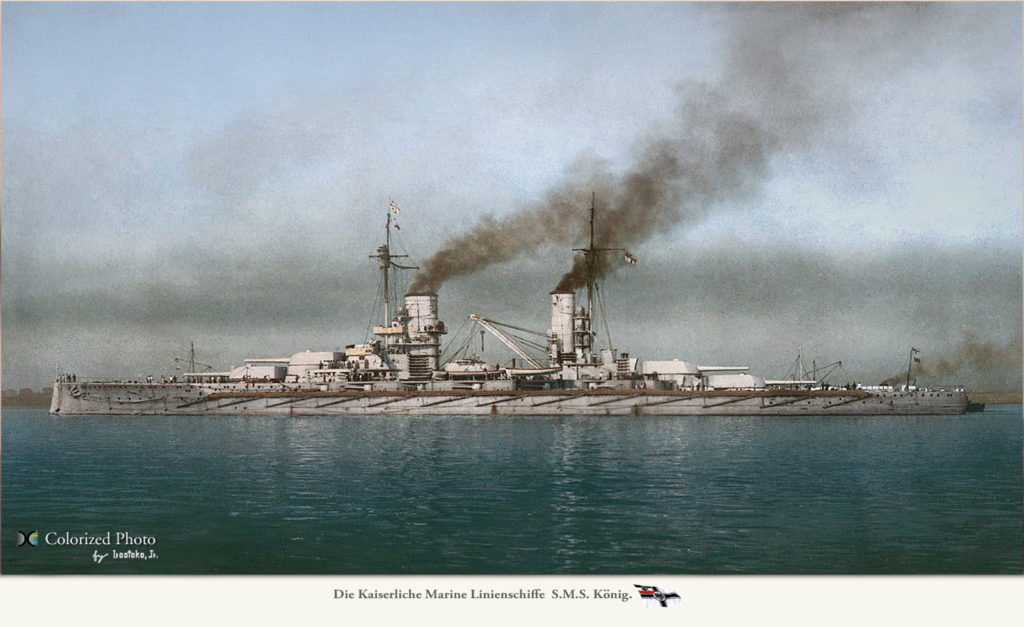
SMS König colorized by irootoko Jr.
Total output was 31,000 metric horsepower (30,576 shp) in normal conditions. This allowed for a top speed of 21 knots (39 km/h; 24 mph). On trials, by forced heat these battleships reached figures such as 41,400–46,200 metric horsepower (40,834–45,568 shp) but kept their top speed with little difference, 21.2 knots (39.3 km/h; 24.4 mph) and 21.3 knots (39.4 km/h; 24.5 mph) for the second and third battleship of the class.
This sea trials were made in the safer and shallower waters of the western Baltic Sea and in general in normal conditions, the König proved faster than the Kaiser at 22.2 knots (41.1 km/h; 25.5 mph) on average. Faor autonomy, they carried 850 t (840 long tons) of coal, 150 t (150 long tons) of fuel oil. Thanks to the additional voids they could store up to 3,000 t (3,000 long tons) of coal and up to 600 t (590 long tons) of oil in wartime for a 8,000 nautical miles (15,000 km; 9,200 mi) radius of action at 12 knots (22 km/h; 14 mph), and 4000 nm at 18 knots (33 km/h; 21 mph).
Electrical power came from four turbo generators and two diesel generators for a total of 2,040 kW (2,740 hp) at 225 volts.
Steering was controlled by two rudders side by side, and according to Historian Erich Gröner these ships were described as “very good sea-boats” with gentle motion, good artillery platforms. They suffered speed loss when turning hard over, up to 66%, heeling over 8 degrees however. But they were overall stable, with a final transverse metacentric height of 2.59 m (8 ft 6 in).
Protection
The general layout proved to be quite similar to the Kaiser class, with Krupp cemented armor and the following figures:
-35 cm (13.8 in)for the main armor belt (citadel walls), 1.78 m (5 ft 10 in) aw (above waterline), 0.36 m (1 ft 2 in) bw, upper strake 20 cm (7.9 in) above. 20 cm then 15 cm fore and aft to the bow and tern and 12 cm on the bottom edge and aft of the citadel, 18 cm to 15 and 13 cm at the stern lower edge.
-6 cm (2.4 in) for the main armored deck (the citadel’s roof) thick over the citadel, sloped down to lower edge of the belt. The slope was 10 cm (3.9 in). Forward deck 10 cm, stern deck 6-10 cm of armor, 12 cm over the steering compartment.
-3 cm (1.2 in) over the central portion of the ship between the end barbettes and the forecastle deck, over the secondary battery.
-4 cm (1.6 in) longitudinal torpedo bulkhead running all the way behind the main belt to contain flooding connected to the main armor deck, sloped down
-3 cm bulkhead for anti-splinter protection.
For ASW protection, the hull’s construction called for eighteen watertight compartments, and a double bottom on 88% of the hull’s length. Compartments each side of the torpedo bulkhead stored coal, helping absorbing blast effects, with pumps to help containing eny flooding.
-30 cm (11.8 in) fr the main turret’s faces, 25.4 cm (10 in) sides, 29 cm (11.4 in) back, thicker, but for balance. Sloped roofs were 11 cm (4.3 in) down to 8 cm (3.1 in) on the flat.
-30 cm thick barbettes over the armored deck down to 22 cm (8.7 in) on the hidden section superfiring, 14 cm (5.5 in) to 8 cm behind the main belt.
-17 cm (6.7 in) for the armored battery for the secondary gun casemates.
-2 cm (0.8 in) floor and sides for the casemate interior, 1.5 cm (0.6 in) rear to contain shapnells.
-30 cm (11.8 in) for the foward CT, 15 cm roof. Other sources tals of 35.6 cm with a base 40.6 cm section, 17 cm roof
-20 cm for the rear conning tower, 5 cm (2 in) roof.
Construction
The first three ships of class, SMS König, Grosser Kurfürst, and Markgraf were ordered FY1911 program and allocated to AG Vulcan, AG Weser, and Schichau-Werke after they submitted tenders to the Reichsmarineamt. They all signed to start construction on 19 July 1911. Finalized orders came on 12 October although initial agreement dated back from August. The design was stil refined at that point with the abandonment of the anti-roll tanks, on January 1912. The third yard awarded was the Kaiserliche Werft, Schichau being awarded the battlecruiser Derfflinger instead.
The fourth König class battleship was authorized under the FY1912 program. There were still discussions to adopt the 32.3 cm (12.7 in) caliber tat this point, but the displacement increase forced to lower the secondary battery to 12 cm (4.7 in) guns, a proposal rejected. The naval staff preferred to have a homogeneous four-ship division for tactical reasons. There were still hopes a diesel engine could be ready in time and the propulsion system was redesigned. Larger and more powerful turbines were planned for this fourth ship but eventually the empty center engine room was reconfigured to accept a third turbine. So SMS Kronprinz not only was the only one with three shafts, but also a redesigned, larger forward tubular foremast to supporting a new and heavier fire direction top, later retrofitted to the other members of the class as they received additional AA guns.
Author’s illustration of the König class
⚙ specifications |
|
| Displacement | 25,796 t (25,389 long tons)n Full load: 28,600 t (28,100 long tons) |
| Dimensions | 175.4 x 29.5 x 9.19m (575 ft 6 in x 96 ft 9 in x 30 ft 2 in) |
| Propulsion | 3× steam turbines, 3x oil+12× coal WT boilers: 31,000 shp (31,000 PS) |
| Speed | 21 knots (39 km/h; 24 mph) |
| Range | 8,000 nmi (15,000 km; 9,200 mi) at 12 knots (22 km/h; 14 mph) |
| Armament | 10× 30.5 cm, 14× 15 cm, 6× 8.8 cm, 4× 8.8 cm AA, 5× 50 cm (19.7 in) TTs |
| Protection | Belt 35 cm, Deck 10 cm, CT 30 cm, turrets 30 cm, casemates 15 cm |
| Crew | 41 officers, 1,095 enlisted men |
The König in action
These vessels were accepted in service between September 1914 (Grosser Kurfürst) and February 1915 (Kronprinz). Kurfürst was the 6th unit of III Wing (Rear Admiral Funke). The others replaced ships of the 4th Wing (Vice-Admiral Schmidt). SMS Kurfürst and Kronprinz were torpedoed by J1 on November 5, 1916, but escaped, Kurfürst later hit a mine in the Gulf of Riga (October 12, 1917) and Markraf on October 29, but both survived, a testimony to their ASW protection. All participated in the Battle of Jutland, and König was the most damaged. After the war, they were interned at Scapa Flow and scuttled in June 1919, BU in 1936 up to 1962 becoming divers’ attraction in the meantime.
During the war, all four König class battleships received a few modifications, between mid-1916 and late 1918, and at first saw their thing tubular fore mast replaced with a thick one, the same as SMS Kronprinz when completed. After Jutland it was clear that stored anti-torpedo nets over the flanks which can be thrown overboard and be mingled with the ships’ screws, and they were removed. Also the anti-ship, low-angle hull 8.8 cm guns were removed, apertures plated over. SMS Kronprinz was the only ship to retained them all for the duration of the war. Importantly, fire control was improved by adopting a new pair of 3-meter rangefinders placed on the ‘A’ and ‘Y’ main battery turrets, later replaced by 4.75 m (15 ft 7 in) rangefinders. Also the C/15 Bg-Mittler system was installed, while in addition, SMS Kronprinz and Grosser Kurfürst were given a Abfeuer-Gerät C/16 gyroscopic stabilizing system for the main guns. Markgraf received the improved C/17 system.
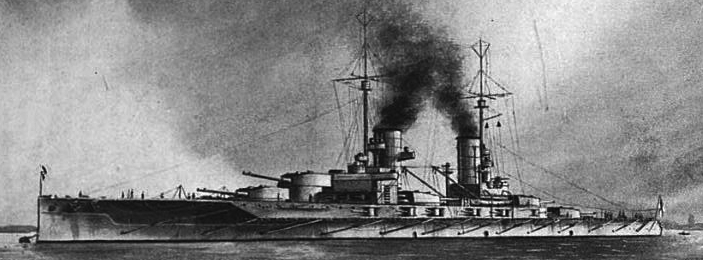
SMS König
Seiner Majestät Schiffe König was ordered under the provisional name “S” at the Kaiserliche Werft, Wilhelmshaven, construction number 33. Laid in October 1911, she was launched on 1st March 1913 by Albrecht, Duke of Württemberg. She was fitted-out by 9 August 1914, and commissioned into the Hochseeflotte (High Seas Fleet), starting her sea trials, until 23 November 1914, as war was already raging. When done, she was assigned to V Division, III Battle Squadron, waiting to be joined by her sister ships. On 9 December, she ran aground in the Wilhelmshaven roadstead, immobilized and rammed by Grosser Kurfürst, following right behind. Fortunately there was only minor damage at her stern. König was tugged out, and repaired at Wilhelmshaven until 2 January 1915.
Fleet sorties in the north sea
SMS König took part in several fleet sorties in the north sea, in support of Rear Admiral Franz von Hipper’s battlecruisers of the 1st Scouting Group, after missing the first operation during the night of 15/16 December 1914. She sailed out for the one of 11 January 1915, but in between, was sent for exercises in the Baltic with the III Squadron. This sortie degenerated in the Battle of Dogger Bank, but the battlecruisers had retired before she could join the fray.
On 29 March, she sailed to Terschelling. On 17–18 April, she supported light cruisers of II Scouting Group in a minelaying mission off the Swarte Bank. She made another sortie on 22 April, leading the squadron again. This routine was interrupted by the 23 April, Baltic exercises, until 10 May. On 17 May she covered another minelaying operation by II Scouting Group. She also covered a fleet advance into the North Sea on 29-31 May. She stayed in picket duty in the German defensive belt but ran aground on 6 July, with little damage. König supported the 11–12 September Texel minelaying, followed buy a fleet advance on 23–24 October and was sent to the drydock for maintenance. She was back on 4 November 1915, sent in the Baltic for training on 5–20 December, but grounded again in the Kaiser Wilhelm Canal during a unusually strong snow storm. In the Baltic on 17 January until 24 January 1916, she returned to the North Sea for two more fleet advances followed on 5–6 March and 21–22 April.
SMS König departed on 24 April 1916 as a distant support for a battlecruiser a raid on the English coast. The battlecruisers left the Jade at 10:55, followed by III squadron at 13:40. SMS Seydlitz hit mine and withdraw while the others shelled Lowestoft but met British cruisers off Yarmouth (Harwich Force) and after a short artillery duel the later withdrew, but full alert was given. However in between reports of British submarines prompted a retreat of I Scouting Group while Admiral Reinhard Scheer, learned the sortie of the Grand Fleet from Scapa Flow, wand withdrawn the support force as well. König was back in the Baltic until sent back in April 1916 in her North sea base in the Jade for the most crucial existential moment in her short career:
Battle of Jutland
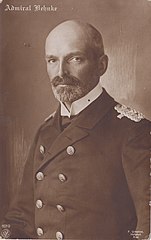 König on 31 May with her squadron was the most modern battleship force of the German high seas fleet, which was sought to draw out and isolate a portion of the Grand Fleet before the main British fleet could retaliate, most possibly Beatty’s battlecruiser force. König, Grosser Kurfürst, Markgraf, and Kronprinz, were now the V Division, III Battle Squadron, in vanguard. Behind them was the Kaiser-class battleships of the VI Division and following were the Helgoland and Nassau classes, I Battle Squadron, and in the guard the Deutschland-class pre-dreadnoughts (II Battle Squadron). Before 16:00 CET, Speer’s battlecruisers (I Scouting Group) met the British 1st Battlecruiser Squadron and engaged a fierce artillery duel followed by the destruction of Indefatigable after 17:00 and Queen Mary, while Speer was as planned, heading south toward the the approaching High Seas Fleet. At 17:30, König’s spotters signalled the smoke of I Scouting Group and 1st Battlecruiser Squadron on their tail. The German battlecruisers were starboard, and the British Battlecruisers to port and at 17:45, a two-point turn to port was ordered followed by battleships started firing on the trapped battlecruisers. SMS König as usual was the lead ship of her squadron, under command of Rear Admiral Paul Behncke.
König on 31 May with her squadron was the most modern battleship force of the German high seas fleet, which was sought to draw out and isolate a portion of the Grand Fleet before the main British fleet could retaliate, most possibly Beatty’s battlecruiser force. König, Grosser Kurfürst, Markgraf, and Kronprinz, were now the V Division, III Battle Squadron, in vanguard. Behind them was the Kaiser-class battleships of the VI Division and following were the Helgoland and Nassau classes, I Battle Squadron, and in the guard the Deutschland-class pre-dreadnoughts (II Battle Squadron). Before 16:00 CET, Speer’s battlecruisers (I Scouting Group) met the British 1st Battlecruiser Squadron and engaged a fierce artillery duel followed by the destruction of Indefatigable after 17:00 and Queen Mary, while Speer was as planned, heading south toward the the approaching High Seas Fleet. At 17:30, König’s spotters signalled the smoke of I Scouting Group and 1st Battlecruiser Squadron on their tail. The German battlecruisers were starboard, and the British Battlecruisers to port and at 17:45, a two-point turn to port was ordered followed by battleships started firing on the trapped battlecruisers. SMS König as usual was the lead ship of her squadron, under command of Rear Admiral Paul Behncke.
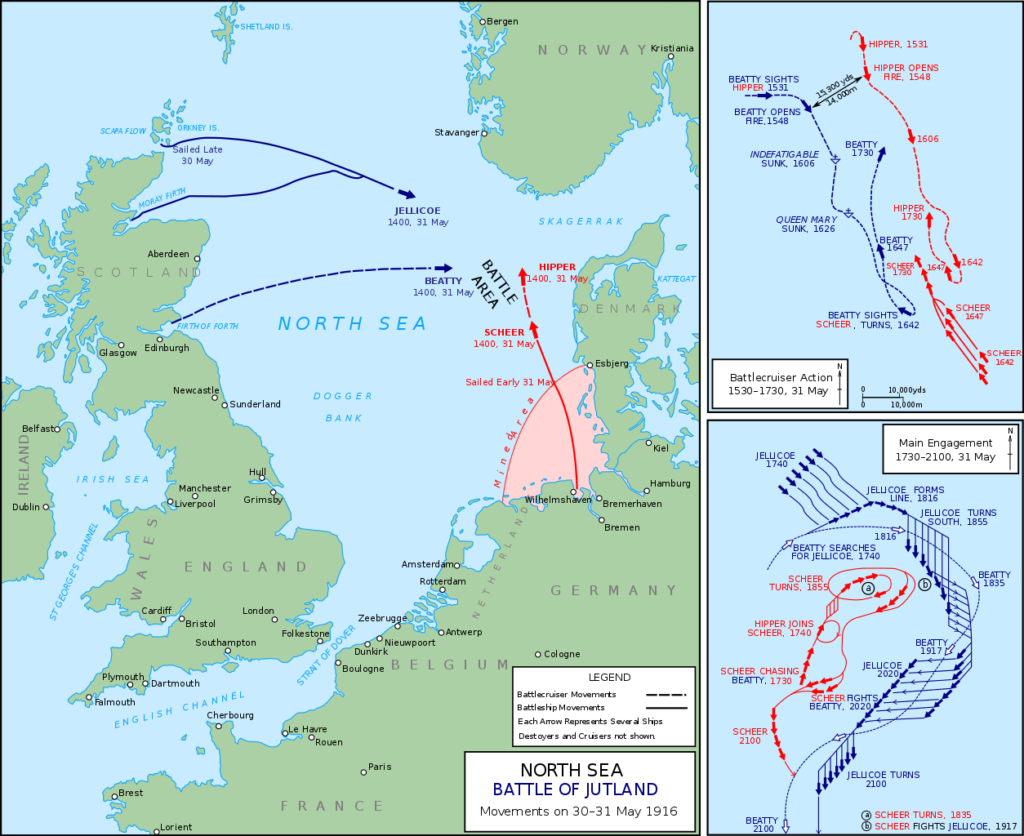
König, Grosser Kurfürst, and Markgraf were the first at gunnery range and engaged Lion, Princess Royal, and Tiger, respectively at 21,000 yards. König’s first salvos fell short of Lion, and she shifted her fire to HMS Tiger, which was closer while their secondary batteries engaged the destroyers Nestor and Nicator which were dangerously close. The two destroyers went through a hail of gunfire but ended close enough to launch two torpedoes each at König and Grosser Kurfürst. In the confusion of battle, all missed while Nestor was badly hit, her engine room devastated. HMS Nomad was also crippled and both were sunk. At around 18:00, König’s squadron spotted the Queen Elizabeth-class battleships approaching in reinforcement (5th Battle Squadron). SMS König first engaged HMS Barham until she was out of range, then engaged HMS Valiant, but the latter were faster and could move in and out of effective gunnery range at leisure.
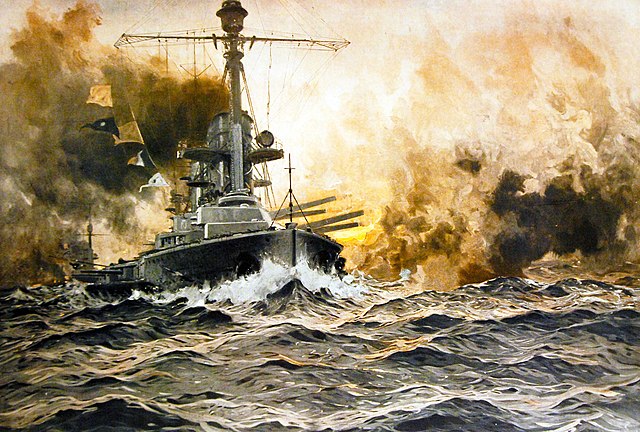
Shortly after 19:00, the cruiser Wiesbaden was badly hit by the British battlecruiser Invincible and Rear Admiral Paul Behncke ordered the III squadron to maneuver to cover the stricken cruiser while at the same tome, the British III and IV Light Cruiser Squadrons closed for a torpedo attack, meanwhile pounding hard the Wiesbade, answered fiercely by König’s squadron, but they failed to drive them off. HMS Defence was badly hit however by several heavy caliber shells, one hitting the ammunition magazines and detonated her.
At circa 19:20, SMS König entered gunnery range of HMS Warspite and was soon joined by Friedrich der Grosse, Ostfriesland, Helgoland, and Thüringen, all concentrating on the unfortunate battleship. The weather however deteriorated fast, and Warspite was out of sight, then she turned east-northeast while British light cruisers and destroyers made another torpedo attack, targeting the whole battleline, starting with König. A few minutes later, and the while main British line came into range in turn. A wall of fire started against both the German battlecruiser force and König-class battleships. König in 5 minutes was targeted by HMS Iron Duke, taking a single hit from 9 salvos at 12,000 yards, striking her forward conning tower, ricocheting. Rear Admiral Behncke onboard was however injured by the concussion but went on commanding the ship and his squadron.
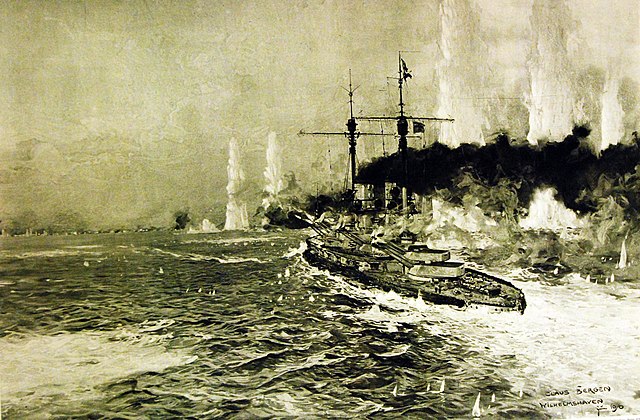
Around 20:00, the German line turned westward to disengage, König as usual leading the pack, slowing for the others to follow, but soon four British light cruisers closed to attack Wiesbaden again, fired upon by the manoeuvring III squadron. At that stage, the British battleships were veering south in a desperate attempt to “cross the T” of the German battle line, spotted by Admiral Scheer which ordered another turn south, ordering Hipper’s battlecruisers to charge toward the British fleet as a diversion. König meanwhile was hit by another 13.5-inch from Iron Duke, aft of the rearmost gun turret, having structural damage but nothing more. Meanwnhile Vice Admiral Schmidt (I Battle Squadron) early turn caused confusion and lef to near-collisions while the German battleships dropped speed to avoid these, making them easier targets. König turned to port, making a smokescreen to obscure the battle line, with some effect. But she was meanwhile hit by other shells, one penetrating the main armored deck, close to the bow, one hitting the armored bulkhead. Two casemates of the secondary guns were disabled by splinters. Their ammunition stores were alight and were flooded. She deplored 45 men killed and 27 wounded during the battle, the highest casualties of any German battleship that came out from the battle.
König after her manoeuver was back to maximum speed, counter-flooded to maintain stability as a result of battle damage. She could cross the Amrum Bank at 09:30 on 1 June and sailed to Kiel for initial repairs from 4 to 18 June, then Howaldtswerke shipyard until 21 July.

Later operations of 1916-17
After full repairs, SMS König was in the Baltic for training until August 1916 and heading back for the North Sea. She made a sortie on 18–20 August, in support of the I Scouting Group (raid on Sunderland), an attempt to lure out and destroy the remaining Beatty’s battlecruisers. But with only Von der Tann and Moltke operational, the Ist scouting group was exceptionally reinforced by SMS Bayern, Markgraf and Grosser Kurfürst. Scheer’s was trailing behind in cover. British Intelligence did its job and the Grand Fleet departed. There was an inconclusive action of 19 August 1916, both fleet withdrawing notably because of Scheer’s hesitations to commit the fleet in another Jutland.
König remained was idle until 21 October, back in the Baltic for training and in the North sea on 3 November. There was a sortie on Horns Reef on 5–6 November and afterwards, rather dull assignments, like guard duty in the German Bight, Baltic convoy escort. In 1917 there was little to do for the squadron but training in the Baltic from February to June. König as drydocked for maintenance in Wilhelmshaven, notably refitted with her new heavy foremast; She was back in operation on 21 July and after a Baltic exercise in September, she was prepared for Operation Albion.
Operation Albion: The Baltic sweep (October 1917)
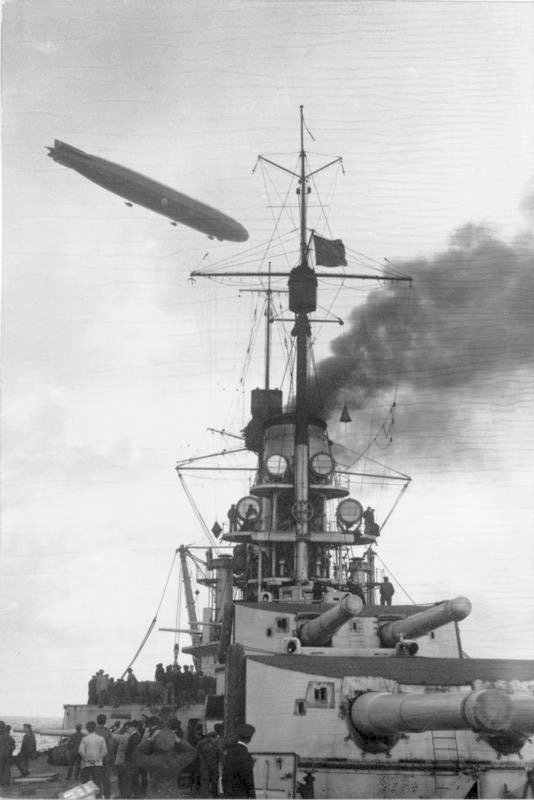
Operation Albion: SMS Grösser Kurfurst and a Zeppelin closing on the ösel island.
In September 1917, the German Admiralstab (high command) decided to use the hochseeflotte’s battleships to assist operation in capturing the Russian port of Riga, and eliminate Russian naval forces in the Gulf. One objectives was the captured of the island of Ösel, and silencing Russians gun batteries on Sworbe. It started on 18 September 1917 with the capture of Ösel and Moon Islands. The Germn composite squadron comprised Moltke, as flagship, leading the III Battle Squadron’s V Division (König-class ships) plus the SMS Bayern and followed by the VI Division (Kaiser-class battleships), 9 light cruisers and 3 torpedo boat flotillas plus a cohort of minesweepers, some 300 ships in total. They had a dedicated aerial support, over 100 aircraft and 6 zeppelins. The opposing Russians aligned the Slava and Tsesarevich, and cruisers Bayan, Admiral Makarov, and Diana plus 26 destroyers, and a complement of torpedo boats and gunboats.
König sailed from Kiel on 23 September to Putziger Wiek, waiting for the fleet to gather until 10 October, the operation starting the following day. At 03:00 AM, SMS König was off Ösel, Tagga Bay loaded with soldiers which disambarked and at 05:50, she duelled with Russian coastal artillery, helped by Moltke, Bayern, and her sister ships. The Kaiser-class engaged the Sworbe peninsula batteries, and the Moo-Dagö islands channel (escape route for the Russians) was secured, however not enough for Grosser Kurfürst and Bayern which hit mines. Bayern was withdrawned to Kiel. At 17:30, König departed to refuel, passing through the Irben Strait on 15 October, but on the 16, the Battle of Moon Sound was to happen: König and Kronprinz leading the pack with the cruisers Strassburg and Kolberg closed to finish off the Russian squadron. On 17 October, they met a Russian minefield and had to slow down while on their way they were found out-ranged by the Russian 30.5 cm guns (which just flooded a side of the battleship to raise artificially the range). They managed to prevent the German battleships to be close enough to respond. The Germans made even evasive maneuvers but by 10:00, minesweepers had effectively cleared a path allowing König and Kronprinz to enter the bay and engaging Slava. Kronprinz concentrated on Slava and Bayan, hitting them dozens of times. At 10:30 Admiral Bakhirev, ordered a withdrawal. SMS König claimed to have hit Slava at least seven times, and she ended scuttled. König also hit Bayan but she fled. On 20 October she was cleared by minesweepers through Kuiwast roadstead, landing soldiers on Schildaum, helping the captured of Moon, Ösel, and Dagö. All were returning to the High Seas Fleet while SMS König was grounded in a heavy swell and repaired later at Kiel until 17 November 1917.
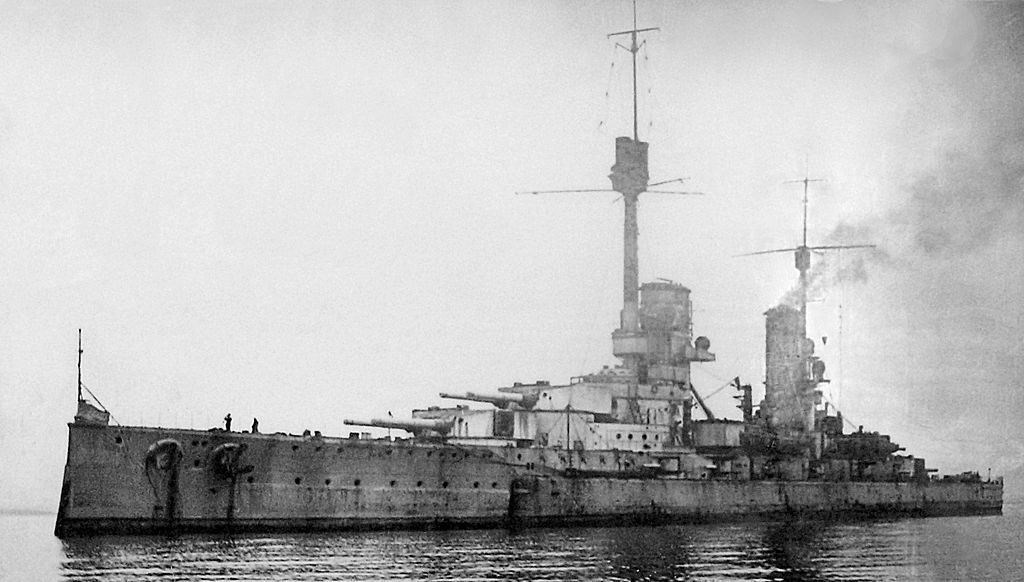
SMS Kronprinz Wilhelm in Scapa Flow
Guard on the north sea (1918)
König was in guard duties in the North Sea for the end of 1917, providing a distant cover for the minesweepers in operations. After a training cruise on 22 December in the Baltic until 8 January 1918 and in 23 February-11 March 1918. She was not engaged, apart a brief raid on 20 April off Norway, trying to intercept a British convoy on 23–25 April (Operation canceled). Yet again, SMS König was grounded north off Helgoland’s harbor on 30 May. On 31 July 1918 she led the III Squadron for another covering mission in the North Sea, and was training in the Baltic in 7–18 August, and back again on 28 September-1 October.
The last planned action was a massive High Seas Fleet sortie from Wilhelmshaven trying to engage one last time the Grand Fleet, to obtain a better bargaining position, but after 29 October 1918, the order was given to depart from Wilhelmshaven to consolidate the fleet in the Jade roadstead, with the intention of departing the following morning. However, starting on the night of 29 October, sailors mutinied and this spread to König and other battleships, leading to cancel the whole operation. The III Squadron was sent to Kiel, after mutiny in which König’s captain was wounded three times and his first officer and adjutant were killed. SMS König’s fate was no different fro her sister ships. Under command of Rear Admiral Ludwig von Reuter, she was interned in Scapa Flow, guarded by a massive flotilla on her way of some 370 combined British, American, and French warships. On site, this was followed by the removal of the gun’s breech blocks.
On the morning of 21 June, as the British fleet left Scapa Flow for training maneuvers, Reuter ordered his ships to scuttle. König sank at 14:00. Later she was never raised for scrapping, and her remains were officially sold to Britain in 1962. She is a popular dive site in Scapa Flow at 40 m (130 ft) on a sandy floor, east of Cava, turned over. She was examined in detail in 2017 by marine archaeologists from the Orkney Research Center. The wreck could be purchased for £250,000, until 28 June 2019 on Ebay. A Middle East company purchased them.
There is no need to cover the career of her three sister ship wich shared the same fate as part of the same unit, the III squadron. However, we will cover details of their individual actions at Jutland: König, Grosser Kurfürst, and Markgraf were the first to reach gunnery range at 21,000 yards, and immediately engaged the battlecruisers Lion (König), Princess Royal (Grosser Kurfürst), and Tiger (Markgraf), but as the lead ship’s first salvos fell short she shifted to Tiger. Grosser Kurfürst was near-missed by destroyers torpedoes, but crippled HMS Nestor and Nomad for good. German torpedo boats picked up their survivors. About 18:00, all four Königs swapped to the approaching Queen Elizabeth-class with a widening range, so it was shot. The latter had an enormous advantage in raw firepower, with a better range and volleys almost twice as powerful. However these advantages were played as they were ordered to keep their distance, out-ranging the German battleships, but accuracy was plagued by low visibility and falling night.
The “Wiesbaden rescue” was participated by all four ships but countered by the British III and IV Light Cruiser Squadrons, forcing them to duel and repel torpedo attacks. Later they sank the armored cruiser HMS Defence, and the battle ended rather indecisively. The slow Nassau-class and Helgoland-class battleships took up guard duties to repel a possible chasing by Jellicoe, the Kaiser-class battleships made another defensive layer outside Wilhelmshaven locks and the four König-class were to stop and refuel and resupply their ammunition stocks in the inner harbor meanwhile. All three but SMS Kronprinz received some damage.
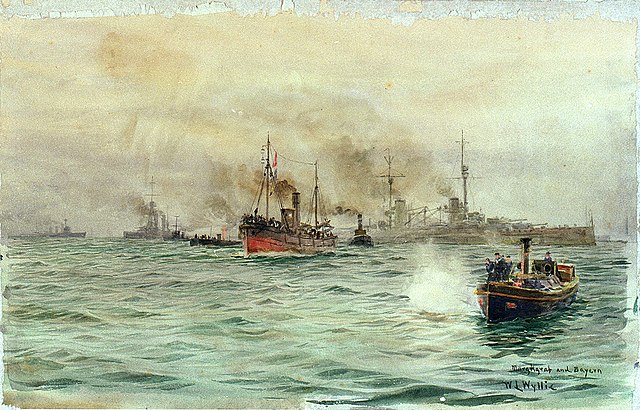
Markgraf in Scapa flow, November 1918
Main Src:
https://en.wikipedia.org/wiki/König-class_battleship
http://www.fr.naval-encyclopedia.com/1ere-guerre-mondiale/Kaiserliche-Marine.php#crois
Conway’s all the world fighting ships 1906-1921
The models corner:
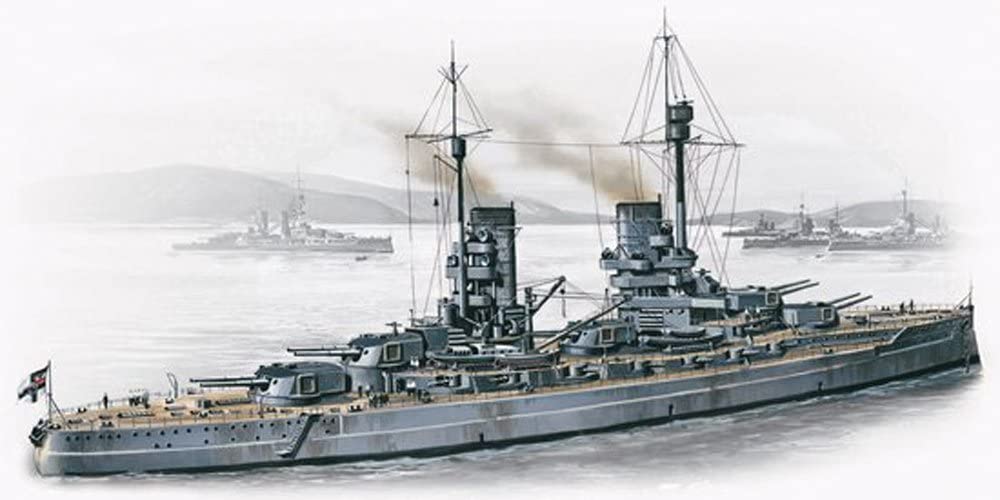
Konig model kit, artist’s impression. ICM Models, 19.7 inches long model
ICM Models Markgraf 1/350, Kronprinz 1/700
-Revell SMS König 1/700
-Aoshima könig 1/350



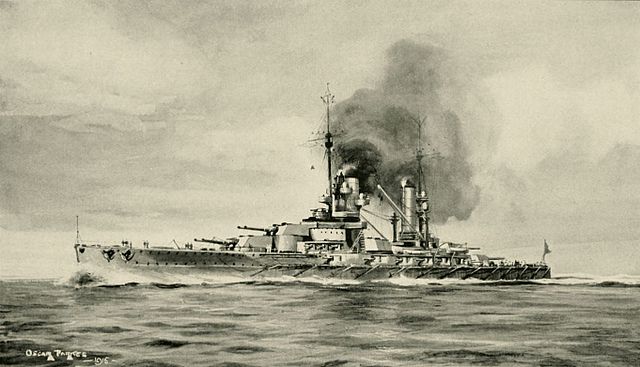

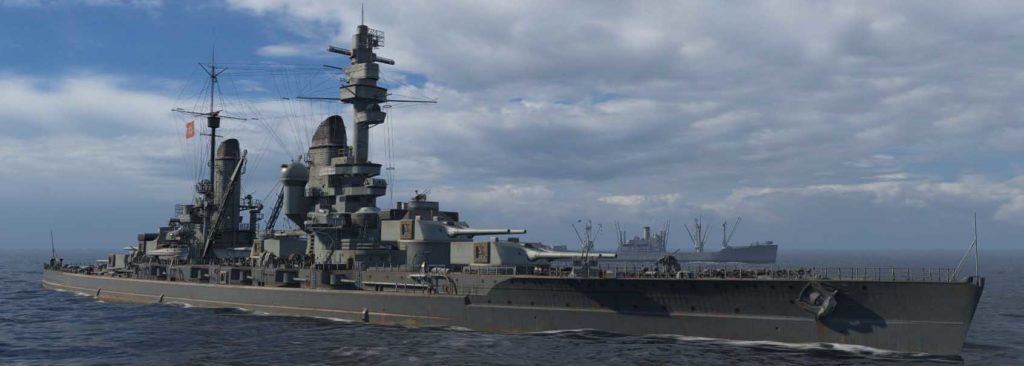
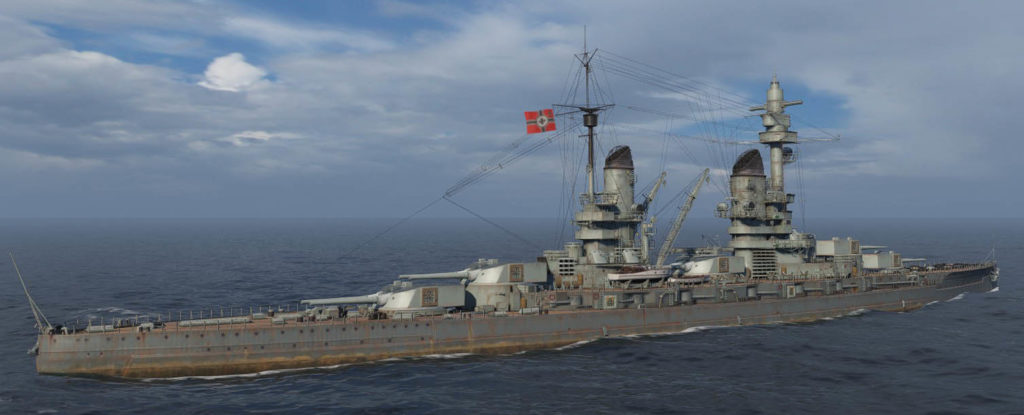
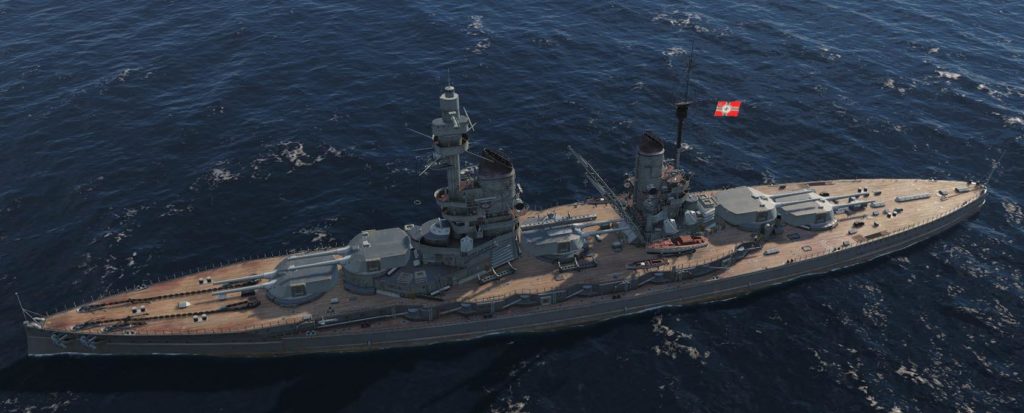
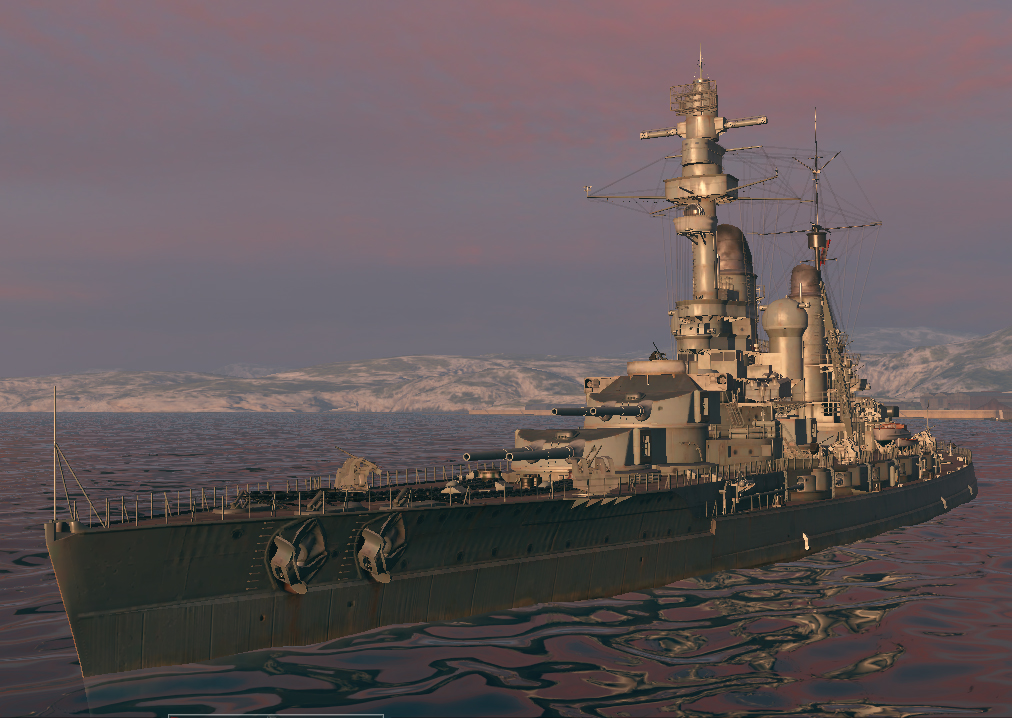
 Latest Facebook Entry -
Latest Facebook Entry -  X(Tweeter) Naval Encyclopedia's deck archive
X(Tweeter) Naval Encyclopedia's deck archive Instagram (@navalencyc)
Instagram (@navalencyc)





 French Navy
French Navy Royal Navy
Royal Navy Russian Navy
Russian Navy Armada Espanola
Armada Espanola Austrian Navy
Austrian Navy K.u.K. Kriegsmarine
K.u.K. Kriegsmarine Dansk Marine
Dansk Marine Nautiko Hellenon
Nautiko Hellenon Koninklije Marine 1870
Koninklije Marine 1870 Marinha do Brasil
Marinha do Brasil Osmanlı Donanması
Osmanlı Donanması Marina Do Peru
Marina Do Peru Marinha do Portugal
Marinha do Portugal Regia Marina 1870
Regia Marina 1870 Nihhon Kaigun 1870
Nihhon Kaigun 1870 Preußische Marine 1870
Preußische Marine 1870 Russkiy Flot 1870
Russkiy Flot 1870 Svenska marinen
Svenska marinen Søværnet
Søværnet Union Navy
Union Navy Confederate Navy
Confederate Navy Armada de Argentina
Armada de Argentina Imperial Chinese Navy
Imperial Chinese Navy Marinha do Portugal
Marinha do Portugal Mexico
Mexico Kaiserliche Marine
Kaiserliche Marine 1898 US Navy
1898 US Navy Sovietskiy Flot
Sovietskiy Flot Royal Canadian Navy
Royal Canadian Navy Royal Australian Navy
Royal Australian Navy RNZN Fleet
RNZN Fleet Chinese Navy 1937
Chinese Navy 1937 Kriegsmarine
Kriegsmarine Chilean Navy
Chilean Navy Danish Navy
Danish Navy Finnish Navy
Finnish Navy Hellenic Navy
Hellenic Navy Polish Navy
Polish Navy Romanian Navy
Romanian Navy Turkish Navy
Turkish Navy Royal Yugoslav Navy
Royal Yugoslav Navy Royal Thai Navy
Royal Thai Navy Minor Navies
Minor Navies Albania
Albania Austria
Austria Belgium
Belgium Columbia
Columbia Costa Rica
Costa Rica Cuba
Cuba Czechoslovakia
Czechoslovakia Dominican Republic
Dominican Republic Haiti
Haiti Hungary
Hungary Honduras
Honduras Estonia
Estonia Iceland
Iceland Eire
Eire Equador
Equador Iran
Iran Iraq
Iraq Latvia
Latvia Liberia
Liberia Lithuania
Lithuania Mandchukuo
Mandchukuo Morocco
Morocco Nicaragua
Nicaragua Persia
Persia San Salvador
San Salvador Sarawak
Sarawak Uruguay
Uruguay Venezuela
Venezuela Zanzibar
Zanzibar Warsaw Pact Navies
Warsaw Pact Navies Bulgaria
Bulgaria Hungary
Hungary

 Bundesmarine
Bundesmarine Dutch Navy
Dutch Navy Hellenic Navy
Hellenic Navy Marina Militare
Marina Militare Yugoslav Navy
Yugoslav Navy Chinese Navy
Chinese Navy Indian Navy
Indian Navy Indonesian Navy
Indonesian Navy JMSDF
JMSDF North Korean Navy
North Korean Navy Pakistani Navy
Pakistani Navy Philippines Navy
Philippines Navy ROKN
ROKN Rep. of Singapore Navy
Rep. of Singapore Navy Taiwanese Navy
Taiwanese Navy IDF Navy
IDF Navy Saudi Navy
Saudi Navy Royal New Zealand Navy
Royal New Zealand Navy Egyptian Navy
Egyptian Navy South African Navy
South African Navy






























 Ukrainian Navy
Ukrainian Navy dbodesign
dbodesign
Hey just wanted to clarify, the specifications say that Konig had 6×2 305mm guns but I have only ever seen Knoig with 5×2 305mm guns,
Indeed, very old post, i just updated the specs.